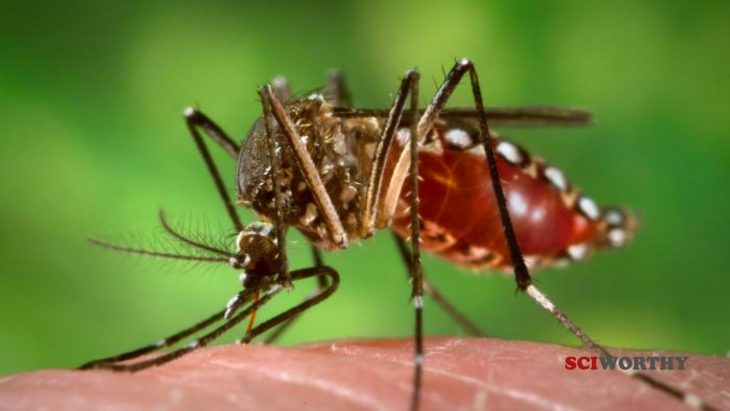By Emily Blythe Lawson
Many insects have the ability to transmit diseases to humans, but mosquitoes are arguably one of the most well-known and widely dispersed culprits. For example, West Nile Virus, Zika and Yellow Fever are just a few of the diseases transmitted through mosquito bites. Researchers are motivated to study mosquito populations around the world in order to understand, and therefore control the spread of these diseases.
Mosquito populations are tightly correlated to factors such as temperature and humidity, such that it is generally expected that one would encounter considerably more mosquitoes in a swampy climate over a snowy one. Climate preferences such as these affect how mosquito species are spread around the world, and patterns emerge that allow researchers to predict and even control outbreaks of disease. Climate is not the only way to predict the spread of mosquito populations. One study found that mosquito populations varied by the socioeconomic status of Puerto Rico’s neighborhoods.
The researchers involved in this study were primarily interested in one species of mosquito; Aedes aegypti. Aedes aegypti is commonly found throughout the tropical regions of the world and is the species responsible for many of the mosquito-borne diseases. Aedes aegypti is an anthropophilic mosquito, which means that it preferentially feeds on human blood and therefore also commonly resides in urban habitats. Due to its city habitat type and preference for human blood, this species of mosquito has adapted to breed and lay their eggs in shallow water; often discarded trash that has collected rainwater.
It was hypothesized that lower socioeconomic status neighborhoods would have higher abundance of Aedes aegypti mosquitoes. Neighborhoods lacking financial resources often have deficient street drainage, frequent flooding, and unmanaged litter, all of which would contribute to a significant Aedes aegypti population as these factors lead to plentiful breeding sites. These authors wanted to understand what aspects of city life lead to more mosquitoes, and how mosquito populations vary between rich and poor neighborhoods.
In order to examine this relationship, eight neighborhoods throughout the San Juan Metropolitan area in Puerto Rico were categorized based on survey questions chosen to represent relative socioeconomic status. The survey questions asked about unemployment, college education, and income. Then, the scientists categorized the neighborhoods in high, middle, and low socioeconomic status.
The surrounding environment was also surveyed for various qualities that might attract mosquitoes. The researchers noted the presence of parks, abandoned homes, and excessive litter, all of which may provide increased mosquito breeding sites. They also considered human population density, which was taken from the most recent census. In an attempt to control for outlying factors, two of the neighborhoods sampled were physically close to one another but of different socioeconomic statuses. One was a gated community ranking the highest, while another was neglected and ranked the lowest.
Through the course of the study, over twelve thousand mosquitoes were collected and identified. Mosquito abundance varied considerably among the neighborhoods that were sampled, which corresponded with human population density. It makes sense that more mosquitoes would be found wherever more humans are available to feed on. This means that neighborhoods with increased human density saw an increase in the number of mosquitoes, and the highest human densities also corresponded with the lowest ranking neighborhoods. The two highest ranking neighborhoods had the lowest Aedes aegypti abundance
The team concluded, based on their data, that socioeconomic status is related to Aedes aegypti abundance within Puerto Rico’s urban landscape. The presence of Aedes aegypti was most closely linked to the presence of litter and median household income for the neighborhood. There were more mosquitos in the poorest neighborhoods. This correlation indicates that low socioeconomic status neighborhoods should be the target for future mosquito control measures, specifically efforts involving trash clean up in order to manage the abundance of trash available to the mosquitoes for breeding. Furthermore, the fluctuating abundance of Aedes aegypti observed in this study between the surveyed neighborhoods, may suggest an unequal risk of infection that parallels socioeconomic status.


